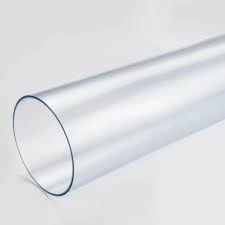dec . 18, 2024 08:06 Back to list
Durable HDPE Duct Pipe Solutions for Efficient Underground Utility Installations
Understanding HDPE Duct Pipe Essential Features and Applications
High-Density Polyethylene (HDPE) duct pipes have emerged as a crucial component in various industries due to their unique physical and chemical properties. Recognized for their strength, durability, and resistance to corrosion, these pipes find extensive applications in a range of sectors, including telecommunications, electrical, and drainage systems.
What is HDPE?
HDPE is a lightweight yet robust thermoplastic polymer made from petroleum. Its molecular structure allows for high-density configurations, contributing to its remarkable strength-to-density ratio. This material is not only resistant to impacts and abrasions but also capable of withstanding a wide range of temperatures. These attributes make HDPE an ideal candidate for duct pipes used in diverse environments.
Key Features of HDPE Duct Pipes
1. Durability One of the main advantages of HDPE duct pipes is their exceptional durability. They can resist significant stress and strain, making them suitable for underground applications where soil movement might compromise other materials.
2. Corrosion Resistance Unlike traditional metal pipes, HDPE duct pipes are immune to rust and corrosion caused by chemical exposure. This property enhances their longevity and reduces the need for frequent replacements, thereby lowering long-term costs.
3. Lightweight HDPE pipes are significantly lighter than metal or concrete alternatives. This lightweight nature simplifies transportation and installation, reducing labor costs and time during the deployment.
4. Flexibility The flexibility of HDPE duct pipes allows them to be snaked into various configurations and layouts, making them ideal for applications requiring intricate routing, such as telecommunications conduits.
hdpe duct pipe

5. Environmental Impact HDPE is a recyclable material, making it a more sustainable choice compared to other non-recyclable options. As environmental concerns grow, using HDPE helps to lessen the ecological footprint of construction and infrastructure projects.
Applications of HDPE Duct Pipes
HDPE duct pipes are used widely in several applications, including
- Telecommunications They are employed to house fiber optic cables and other communication lines, protecting them from environmental factors and mechanical damage.
- Electrical Conduits These pipes serve as conduits for electrical wiring, ensuring that the cables remain insulated from external elements and reducing the risk of short circuits.
- Wastewater and Stormwater Management HDPE duct pipes are increasingly being used in drainage systems due to their ability to handle fluids without leaking or degrading.
- Industrial Applications In industrial settings, HDPE is used for fluid transportation, including chemicals that may corrode traditional piping materials.
Conclusion
In summary, HDPE duct pipes offer an array of benefits that make them indispensable in modern infrastructure development. Their durability, resistance to corrosion, lightweight nature, and eco-friendly properties highlight their relevance across numerous applications. As industries continue to evolve and prioritize sustainability, the role of HDPE duct pipes is likely to expand even further, paving the way for advances in construction and pipelines. Whether in telecommunications, electrical systems, or wastewater management, the attributes of HDPE duct pipes ensure they will remain a preferred choice for diverse applications for years to come.
-
Premium Glossy PP Rigid Sheet – Durable & Versatile
NewsAug.07,2025
-
High-Quality HDPE Sheet | Durable Plastic Panels
NewsAug.06,2025
-
High-Precision PVC Rigid Sheets for Vacuum Forming | AI-Optimized
NewsAug.05,2025
-
Durable PVC-M Water Supply Pipes | 60-Year Life
NewsAug.04,2025
-
Premium HDPE Water Supply Pipes: Durable & Leak-Proof
NewsAug.03,2025
-
Premium PVC-M Water Supply Pipe - Durable & Efficient
NewsAug.02,2025

